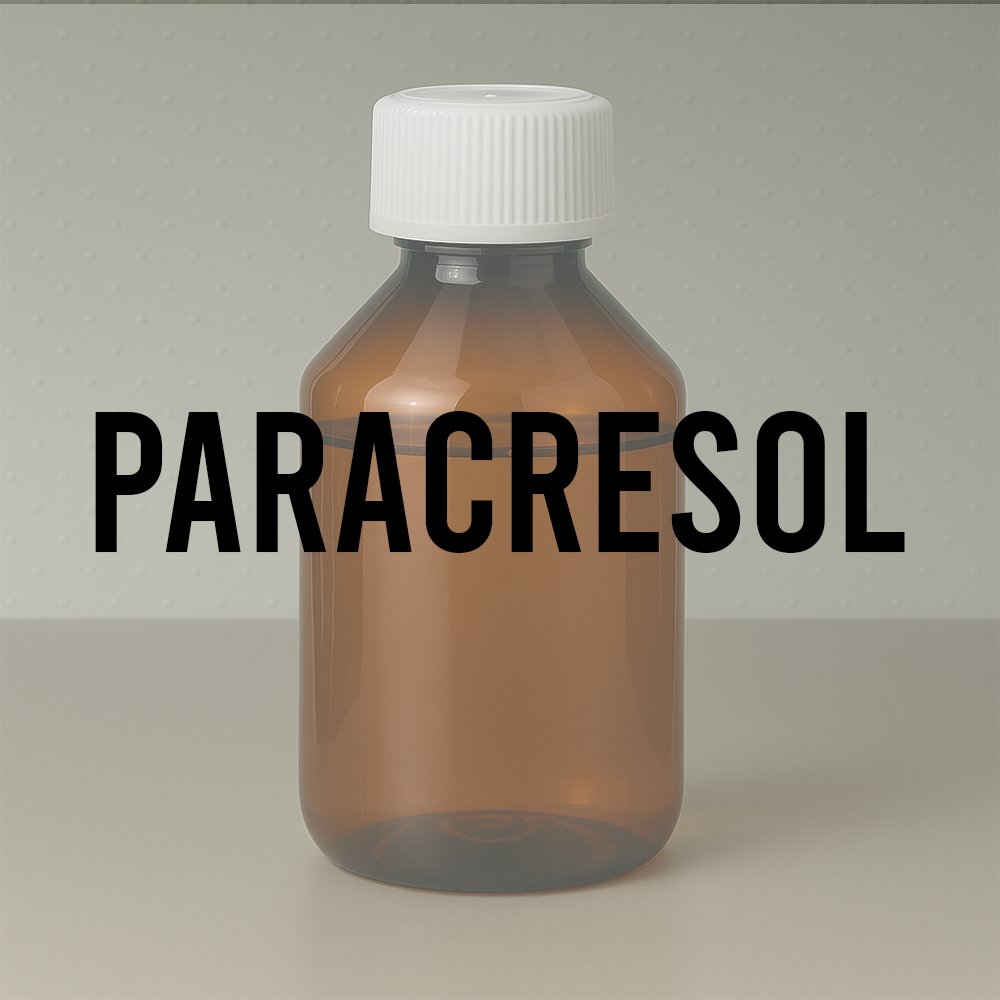Ambrinol (CAS 41199-19-3) - Technical Ingredient Overview
🔎 Chemical Name — 2,5,5-Trimethyl-1,2,3,4,4a,5,6,7-octahydronaphthalen-2-ol
🧪 Synonyms — α-Ambrinol, Alpha-ambrinol, Ambrinol S, Ambergris naphthol, 1,2,3,4,4a,5,6,7-Octahydro-2,5,5-trimethyl-2-naphthalenol
📂 CAS Number — 41199-19-3
📘 FEMA Number — Not assigned (not approved for flavor use)
⚖️ Molecular Weight — 194.31 g/mol
🧬 Molecular Formula — C₁₃H₂₂O
📝 Odor Type — Amber, ambergris
📈 Odor Strength — Very high (8/10)
👃🏼 Odor Profile — Powerful amber note reminiscent of aged ambergris with warm animalic, musky undertones; displays tobacco, leathery, earthy, and slightly fecal nuances characteristic of natural ambergris; dry, tenacious, and complex
⚗️ Uses — Base note fixative in fine fragrances, amber accords, oriental compositions, woody-amber blends; used in cosmetics, soaps, body care products, and detergents
🧴 Appearance — Colorless to pale yellow liquid, or white solid with melting point 60–70°C (depending on purity and isomeric composition)
What is Ambrinol?
Ambrinol is a synthetic aroma chemical belonging to the polycyclic alcohol family, designed to replicate the olfactory characteristics of natural ambergris. Specifically, α-Ambrinol (the most commonly used form) is one of several key odoriferous compounds identified in aged ambergris—a rare secretion historically obtained from sperm whales (Physeter macrocephalus).
Structurally, Ambrinol is a bicyclic naphthol derivative featuring a hydroxyl group and trimethyl substitution pattern that contribute to its powerful amber scent. It exists as multiple stereoisomers (cis and trans configurations), with α-Ambrinol (cis form) being the predominant variant used in perfumery due to its superior olfactory profile (Burdock, 2016; Surburg & Panten, 2016).
Unlike Ambroxide (CAS 6790-58-5), which has a perhydronaphthofuran structure, Ambrinol features a naphthalenol core, giving it a more animalic, earthy, and tobacco-like character compared to the cleaner woody-ambery profile of Ambroxan (Pybus & Sell, 1999).
Historical Background
The history of Ambrinol is intrinsically linked to the chemistry of natural ambergris. In the 1930s, pioneering research by Leopold Ružička at Firmenich and later work by Günther Ohloff and colleagues in the 1950s–1970s aimed to decode the complex composition of ambergris and identify its key olfactory constituents (Ohloff, 1982).
During this research, α-Ambrinol was identified as a naturally occurring degradation product of ambrein, the triterpene alcohol that forms the bulk of fresh ambergris. Through photochemical oxidation and marine weathering over years or decades, ambrein breaks down into various compounds including α-Ambrinol, γ-dihydroionone, and other amber-type molecules (Lederer et al., 1946; Ohloff & Vial, 1977).
The first synthetic preparation of Ambrinol was achieved through thermolysis (heat-induced decomposition) of β-ionone, which yields dehydroambrinol as an intermediate. Subsequent hydrogenation using Raney nickel catalyst in methanol produces Ambrinol (Burdock, 2016; Surburg & Panten, 2016). This synthetic route was commercialized in the mid-20th century as demand for ambergris alternatives grew due to ethical concerns and supply scarcity following whale conservation measures.
More recent synthetic approaches include titanium-catalyzed cyclization methods starting from commercially available α-ionone or γ-dihydroionone, offering higher stereoselectivity and improved yields (Serra et al., 2023).
Olfactory Profile
Scent Family: Amber, ambergris-type
Main Descriptors:
Ambrinol delivers an exceptionally powerful amber signature with distinctly animalic and musky undertones. Its profile closely mimics the complex character of well-aged natural ambergris, featuring:
Warm, sweet amber with dry woody facets
Pronounced animalic, fecal, and earthy notes (described as “halitosis” or “musty earth” in technical evaluations)
Tobacco-like and leathery nuances
Marine, ozonic hints reminiscent of seawater and seaweed
Moldy, mossy forest floor undertones
Intensity: Very high (8/10) — requires use in minute quantities (typically 0.1–2% in finished perfume compounds)
Tenacity: Exceptional — lasts over 96 hours on blotters; classified as a true base note with extreme substantivity
Volatility: Very low — evaporates slowly, making it ideal as a fixative to anchor volatile top and middle notes
Fixative Role: Ambrinol functions as both an olfactory contributor and a technical fixative. It enhances longevity, rounds out sharp synthetic notes (especially aldehydes), and provides a warm, animalic foundation that supports floral, woody, and oriental structures.
Applications in Fine Fragrance
Ambrinol is used primarily in amber accords where authentic ambergris character is desired without the ethical concerns of natural material. It is particularly valued in:
Oriental and amber compositions — provides warm, sensual drydown
Modern woody-amber fragrances — blends with Ambroxan, Iso E Super, and cedarwood derivatives
Animalic bases — combined with castoreum, civet substitutes, and leather notes
Aldehydic florals — softens harsh metallic edges and adds depth to delicate flowers like muguet, freesia, and white rose
Pairing Behavior:
Synergizes with Ambroxan and Cetalox for layered ambergris effects
Enhances labdanum, patchouli, vetiver, and oakmoss for earthy complexity
Rounds out aldehyde C-12, benzyl salicylate, and coumarin in classic perfume structures
Performance in Formula
Ambrinol is extremely potent and must be dosed with precision. Typical usage ranges from 0.25% to 2% in concentrated perfume bases. At low levels (0.1–0.5%), it provides subtle animalic warmth; at higher concentrations (1–2%), it can dominate the composition with intense amber character.
Stability: Ambrinol is highly stable in alcoholic solutions, perfume oils, and functional bases. It resists oxidation and maintains olfactory integrity under varied pH and temperature conditions.
Blending Considerations: Due to its powerful animalic facets, Ambrinol should be balanced carefully with cleaner woody-ambers like Ambroxan or sweeter elements like vanilla and tonka bean to avoid overwhelming the composition.
Industrial & Technical Uses
Beyond fine fragrance, Ambrinol is used in:
Functional perfumery — soaps, body washes, shampoos, lotions
Household products — laundry detergents, fabric softeners (provides lasting scent deposition on textiles)
Candles and home fragrances — contributes warm amber base notes
It is not approved for use in flavoring under FEMA guidelines.
Regulatory & Safety Overview
IFRA Status:
No restrictions under IFRA 51st Amendment for Category 4 (fine fragrance)
No specific limitations reported for other product categories
IFRA Standards Library: https://ifrafragrance.org/standards-library
EU Cosmetics Regulation (EC 1223/2009):
Permitted for use in cosmetic products
Not listed among the 26 allergenic substances requiring mandatory declaration
Compliance maintained when used within good manufacturing practices
FEMA Status:
Not assigned — Ambrinol is not approved for flavor applications.
Toxicology:
Ambrinol exhibits low acute toxicity in standard safety assessments. It is non-sensitizing and non-phototoxic when tested according to RIFM protocols. No adverse dermal or respiratory effects reported at typical use concentrations in perfumery (Belsito et al., 2008).
References
Belsito, D., Bickers, D., Bruze, M., Calow, P., Greim, H., Hanifin, J. M., Rogers, A. E., Saurat, J. H., Sipes, I. G., & Tagami, H. (2008). A toxicologic and dermatologic assessment of cyclopentasiloxanes when used in cosmetics. Cosmetic Ingredient Review, 27(4), 1–73.
Burdock, G. A. (2016). Fenaroli’s handbook of flavor ingredients (6th ed.). CRC Press.
Lederer, E., Mercier, D., & Polonsky, J. (1946). Sur la constitution chimique de l’ambre gris. Helvetica Chimica Acta, 29(5), 1354–1357.
Ohloff, G. (1982). The fragrance of ambergris. In E. T. Theimer (Ed.), Fragrance chemistry: The science of the sense of smell (pp. 535–573). Academic Press.
Ohloff, G., & Vial, C. (1977). Permanganate oxidation of ambrein and the absolute configuration of dihydro-γ-ionone. Helvetica Chimica Acta, 60(8), 2767–2769.
Pybus, D. H., & Sell, C. S. (Eds.). (1999). The chemistry of fragrances. Royal Society of Chemistry.
Serra, S., Cominetti, A. A., Lissoni, V., Mariani, M., Simionati, D., & Garavaglia, S. (2023). A concise diastereoselective total synthesis of α-ambrinol. Marine Drugs, 21(4), 230. https://doi.org/10.3390/md21040230
Surburg, H., & Panten, J. (2016). Common fragrance and flavor materials: Preparation, properties and uses (6th ed.). Wiley-VCH.







